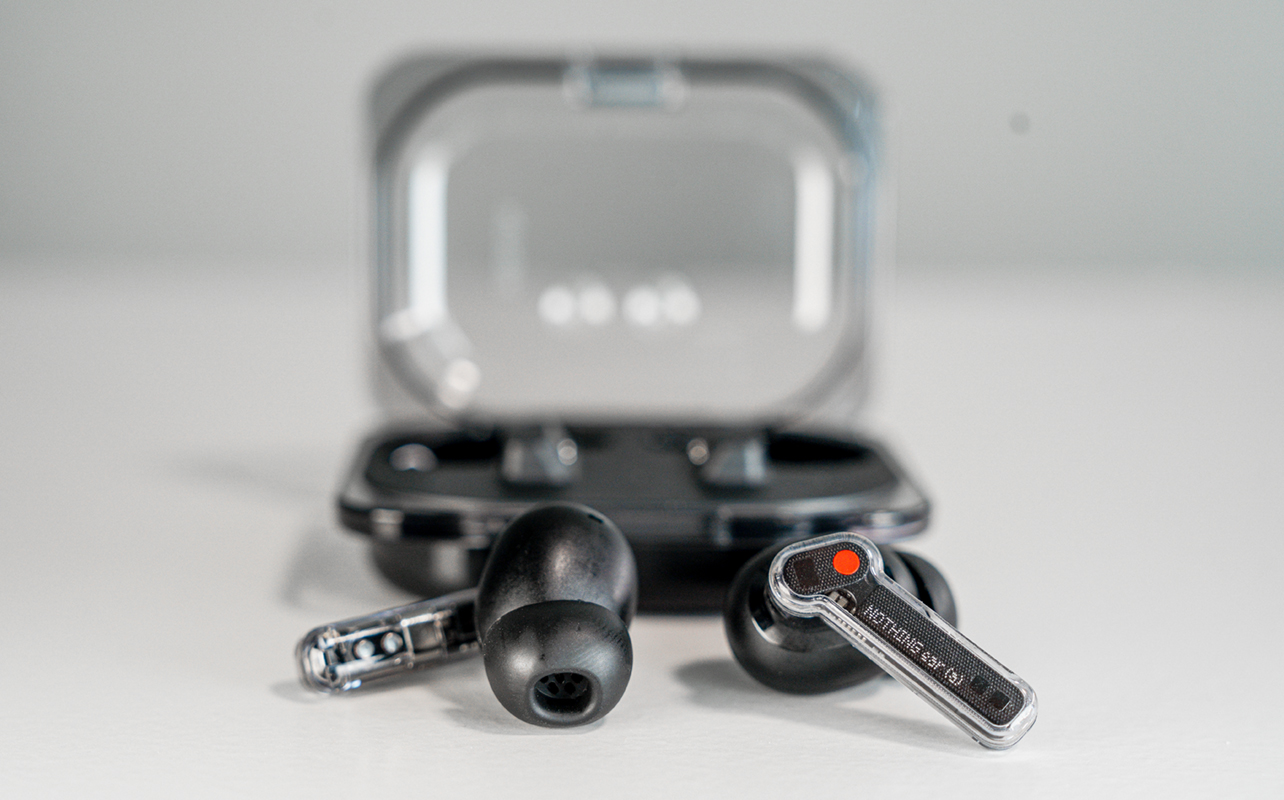
If there’s a word to describe the Nothing Ear (a) earbuds, it’s balance. Neither premium, nor super budget-friendly, feature-rich, or particularly specialized, their strength is in reliability and consistency.
What they have going for them off the bat are unique aesthetics, and a design so slim that you might worry more about potentially losing them. You don’t need a Nothing phone to use them, though ChatGPT integration only works when you do. There are other trade-offs you have to accept that may leave you wondering if the more advanced Nothing Ear earbuds are worth considering.
Watch the Nothing Ear (a) in action
Design and setup
Nothing likes transparent and translucent materials, so hardly a surprise the stems on these buds are see-through. In a crowded field of wireless earbuds with so many design traits, these manage to stand out despite all that. Once friends see you wearing them, it’s not altogether unlikely they won’t remember them. It’s that retro futuristic look that’s so unique in the Nothing Headphone (1) as well.
They’re also well designed to stay comfortable over longer listening sessions. I wore these for hours at my desk and didn’t even realize it at times. I rarely, if ever, had to adjust them or take a break because of increased heat in my ears. Part of the reason is how the main body nestles into the inner ear, but also the silicone ear tips. While I would like to see an extra-small or extra-large pair included, odds are still good you’ll find a good fit with any of the three available pairs.
The Nothing X app has a fit test to help pick the right pair for you. That could include the odd case where you need to wear a different size in either ear.
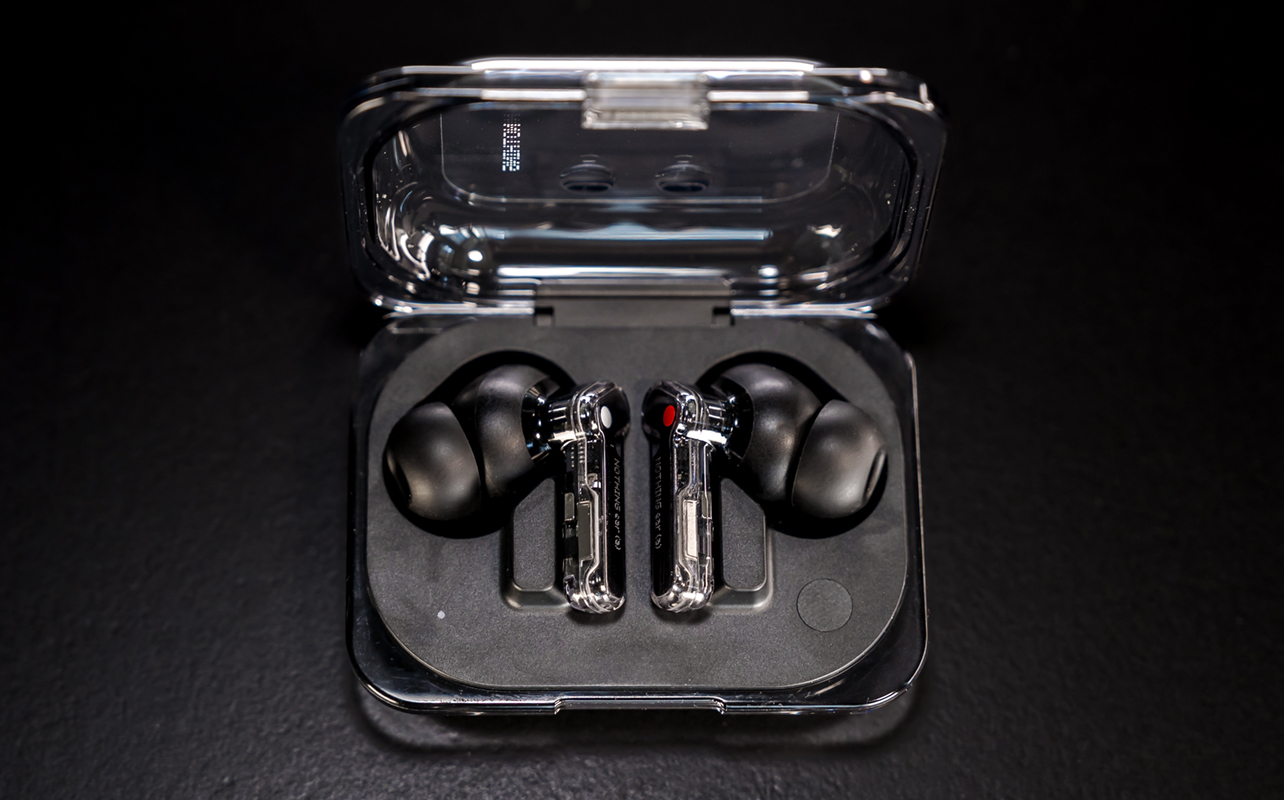
The charging case follows the same design language, and it’s small enough to pocket without issue. Closing with a satisfying “snap”, Nothing also colour-codes the two sides to take the guesswork out of which earbud goes where. White for the left, red for the right.
It’s also pretty easy to set them up for Bluetooth pairing. Google Fast Pair makes it really fast on Android devices but you should also be up and running fairly quickly on an iOS device. They work just fine on Windows PCs and Macs, too.
Nothing X app
The Nothing X app is an integral part of how much you can squeeze out of the Ear (a). Not only is this where you get to download and install firmware updates, but also the best route to expand audio features and lay down some personalization.
One to look out for right away is Dual Connection, which lets you pair these earbuds with two devices simultaneously. A common feature on many wireless earbuds today, though still a welcome feature to have. The aforementioned Ear Tip Fit Test is also worth doing to know which ear tips you should wear.
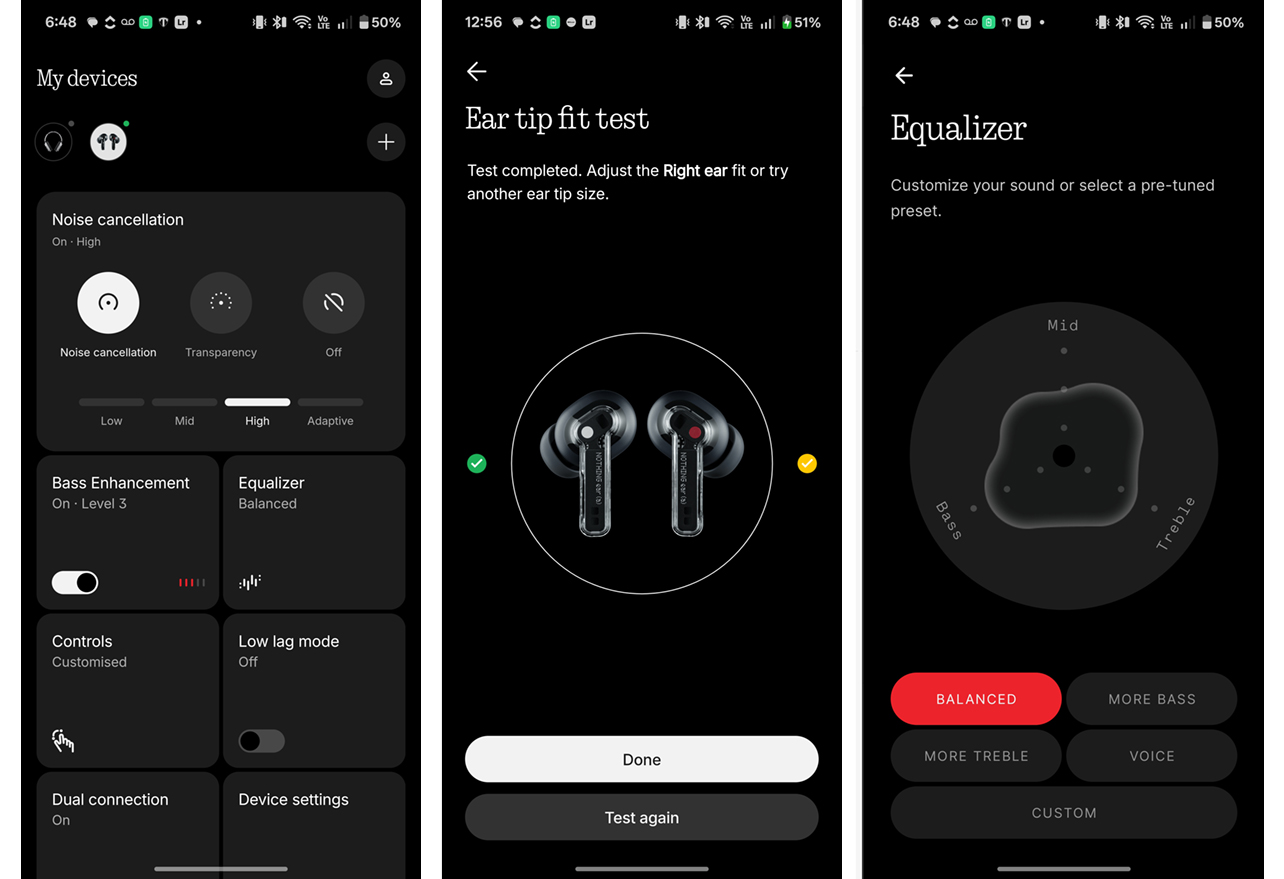
In-Ear Detection activates the onboard wear sensors to automatically pause playback. You can switching between active noise cancellation (ANC), Transparency, or leave both off. Then there are the audio-related settings found in the Equalizer, Bass Enhancement, and Low Lag mode.
On a Nothing Phone, you’ll see a pop-up appear to set up ChatGPT as an option under the controls.
Controls and customization
Nothing finds a middle road for controls as well. Rather than using a touch-sensitive surface, it sticks with pinch gestures on the stems for more reliable outcomes. It has a tactile feel to it and takes little time to figure out.
Pinch once on either side to play/pauses playback or answer/end phone calls. A double-pinch skips a track or declines an incoming call, while a triple-pinch goes back. Pinch and hold toggles between ANC and Transparency modes. Since it’s the same on both sides, you do have the option to change this on one of them to either activate your phone’s voice assistant or control volume. A double pinch-and-hold on both sides does nothing out of the box but you can assign volume up or down, or voice assistant to either one. On Nothing Phones, you can assign this to ChatGPT instead, if you prefer.
What’s nice about all these controls is that built-in haptics make it feel like you’re pressing an actual button. You’re not, but it doesn’t matter because the “click” you hear sounds and feels like one. So, when you pinch once, twice, or three times, you’re not guessing whether or not you did it right.
Audio quality
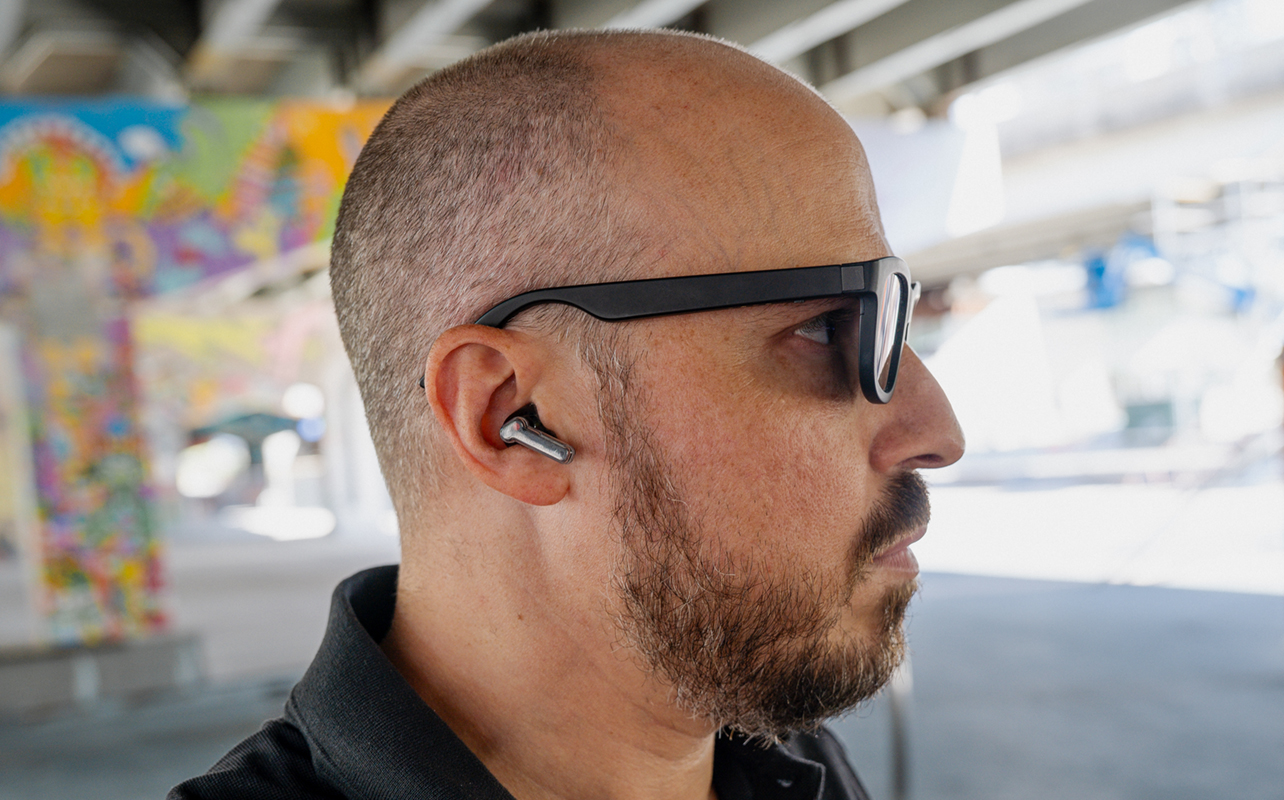
Aligning with the balanced theme of these earbuds, that’s exactly what they sound like out of the box. The sound profile doesn’t skew far in any direction, prioritizing clarity across the spectrum rather than overwhelming bass. Treble comes through with some spark, while the mids bring out instrumentation with some detail. For earbuds in this range, it’s an effective mix but there’s room to customize it.
If you want more bass, try the Bass Enhancement to give that a boost with up to five levels of potency. The Equalizer offers four presets to choose from, along with a custom option. This works differently from the custom EQ in the more premium Nothing Ear earbuds and Headphone (1), where you have an 8-band EQ to make fine-tuned adjustments. Here, you can move the balance between bass, treble, and mids in a limited capacity to experiment with a sound you might like more than the default.
If you like hi-res audio on your Android device, you have the option to turn on LDAC support (in the Nothing X app), a hi-res Bluetooth codec that supports higher-quality streams from sources offering it (i.e. Tidal, Amazon Music). Doing so disables the equalizer, so while you can enjoy higher quality, you get it at Nothing’s default tuning.
Spatial audio isn’t part of the mix here, though you can try Low Lag mode to reduce latency when you want to play games or watch movies and shows. It helps but I’ve seen better low-latency performance in other earbuds, so it’s not a strong point for the Ear (a).
Phone call quality is quite good, thanks in large part to how the mics reduce background noise to help you hear yourself talking, much less the person on the other end.
Noise cancellation and Transparency
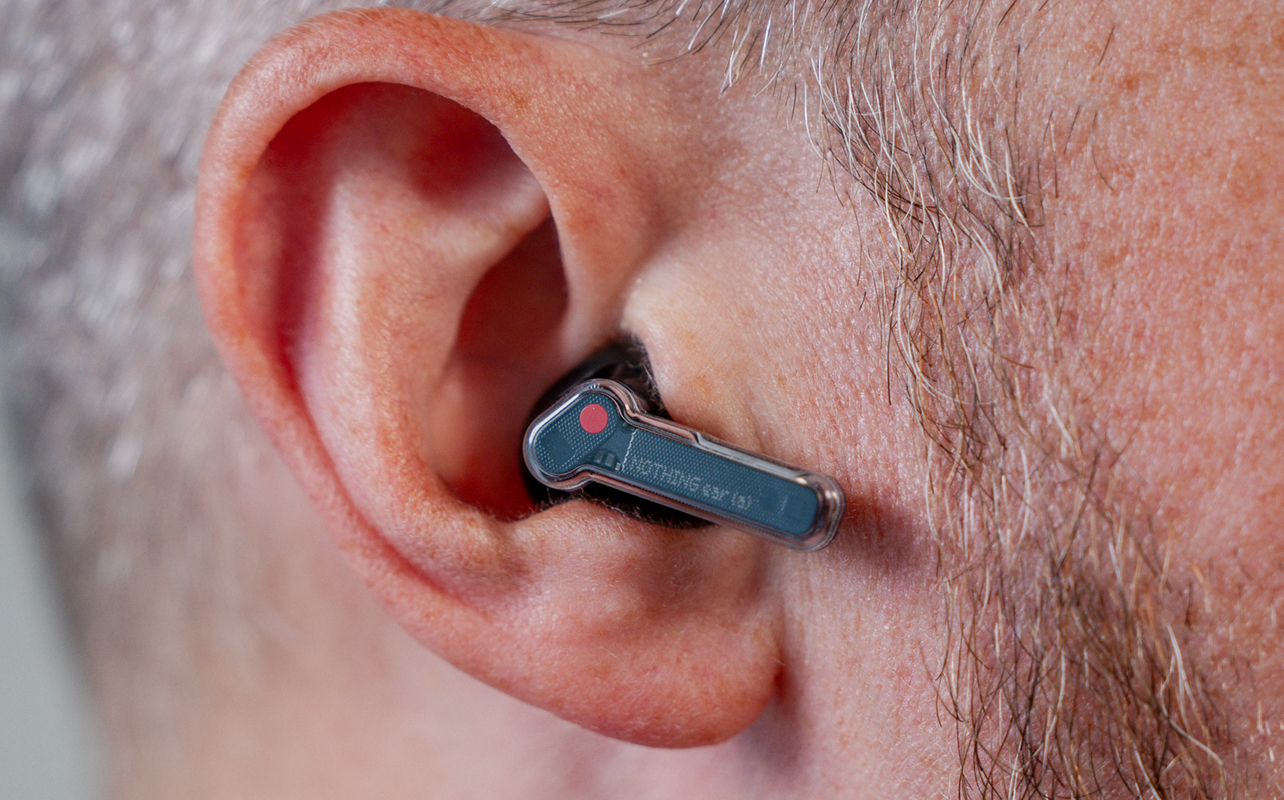
You need to measure your expectations off the bat because balanced noise cancellation comes with a few caveats. Nothing offers three ANC settings: Low, Mid, and High. You can also choose Adaptive to allow the onboard sensors and mics to adjust between those three settings on their own based on how much noise they pick up around you.
The Ear (a) excel most with the low-frequency rumbles you get from buses or trains, though the higher pitches, like screeching brakes and clanging sounds of streetcars or trams, will break through a little. Wear these in an office or just while strolling down the street, and you’ll find the earbuds muffle most ambient noise. I can’t say I’m impressed with ANC performance here, though also can’t say it’s not in line with what these earbuds cost.
I preferred manually adjusting the ANC level myself because it made for more consistent audio playback. Moreover, I highly recommend doing the Ear Tip Fit Test as the best way to help the sensors and mics know how far to go in blocking out unwanted noise.
Transparency mode, on the other hand, is pretty straightforward. Turn it on and outside sounds become audible, allowing you to hear announcements, hold a conversation, or just be aware of your surroundings in busier settings. Since it’s easy to cycle between ANC and Transparency, you can make a switch when you need to with little fuss.
Battery life
Nothing rates the Ear (a) at up to 9.5 hours with ANC and Transparency off. Use them and that number drops down to about eight hours or so. A major factor—as is the case with any pair of earbuds—are the volume levels. The louder you go, the shorter they last.
The charging case gives you another three charges (and a little extra), so you’re covered for a while before the case itself needs a recharge. If you’re tight for time, plug in the case for 10 minutes and Nothing says you can get up to 10 hours of playback. I can’t be sure of that but there’s no doubt they play for a long while after doing so. The key thing to remember is this only works when the case still has a charge. It won’t work if it’s totally empty. Also, there’s no wireless charging here, forcing you to keep the USB-C cable handy.
Final thoughts
The Nothing Ear (a) aren’t exceptional wireless earbuds. Audiophiles will probably want more granular control, while bass lovers may prefer a pair that pack a bigger low-end punch. These are earbuds for everyone else, meaning if you’re looking for quality and reliability—plus some customization—they will deliver based on those expectations.
The Nothing Ear (a) are available now in black, white, and yellow. Check out all the latest wireless earbuds.





